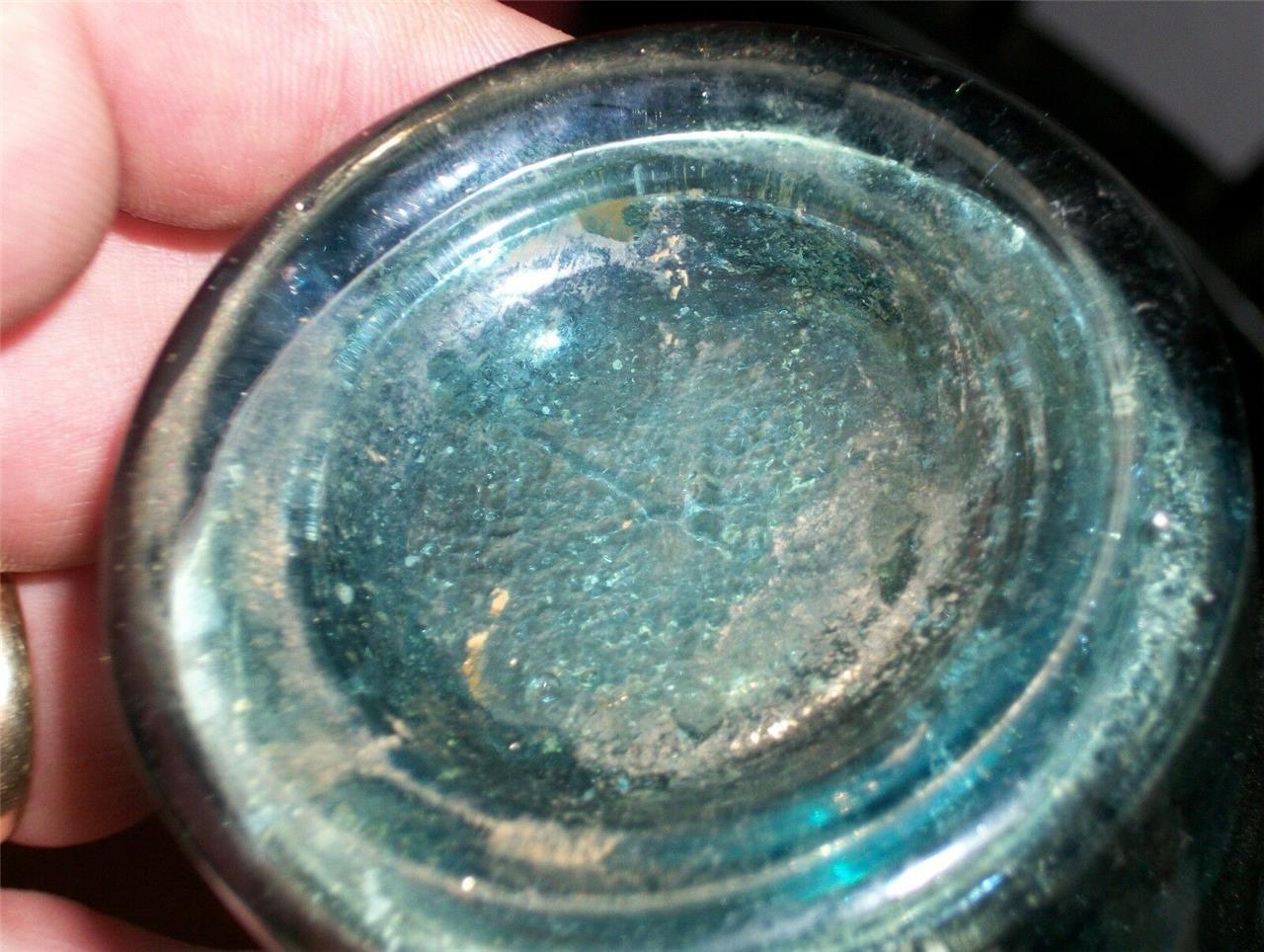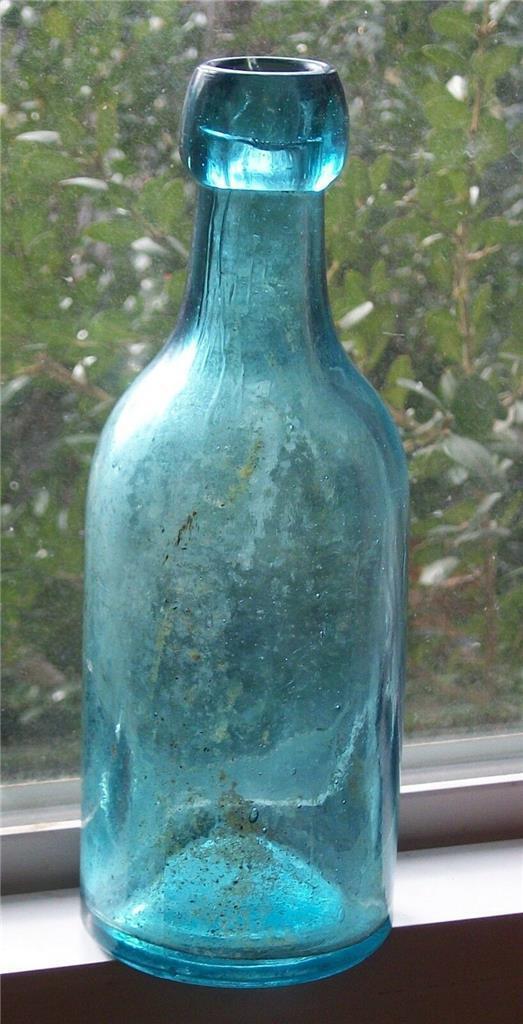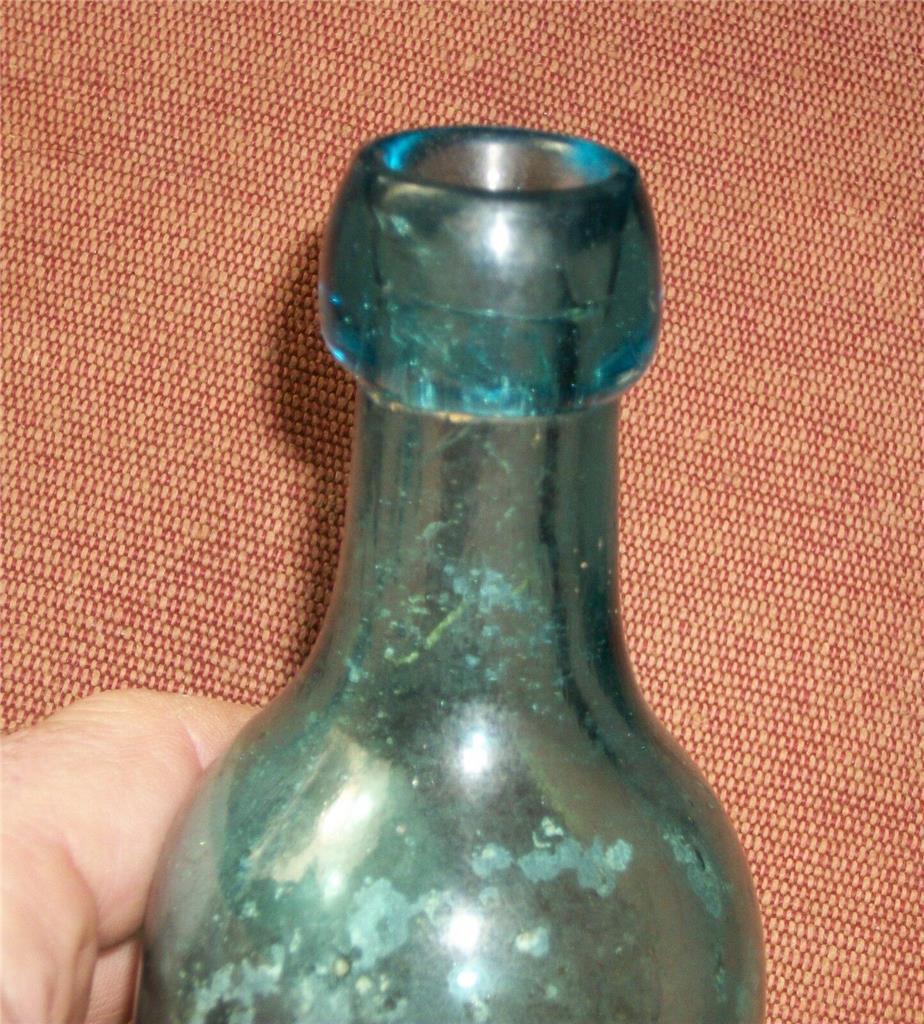-40%
OLD TEIL GREEN BOTTLE SFPGW SAN FRANCISCO & PACIFIC GLASS WORKS 1880 SODA LIQUOR
$ 131.47
- Description
- Size Guide
Description
OLD TEIL GREEN BOTTLE SFPGW SAN FRANCISCO & PACIFIC GLASS WORKS 1880 SODA LIQUORGREETINGS, FEEL FREE
TO
"SHOP NAKED"
©
We deal in items we believe others will enjoy and want to purchase.
We are not experts.
We welcome any comments, questions, or concerns.
WE ARE TARGETING A GLOBAL MARKET PLACE.
Thanks in advance for your patronage.
Please Be sure to add WDG to your
favorites list
NOW FOR YOUR VIEWING PLEASURE…
OLD GLASS BOTTLE
PRODUCED BY
SAN FRANCISCO & PACIFIC GLASS WORKS
SF&PGW
TEIL GREEN BLUE
NO INDICATIVE MARKS EXCEPT
THE 6 POINT STAR ON THE UNDERSIDE
"SNOWFLAKE"
OUR PICTURES DO NOT CAPTURE THE IMAGE
AS WELL AS IN HAND (OUR APOLOGIES)
BLOB TOP
CIRCA 1870 - 1880
GOLD RUSH ERA
FOUND DIRTY
THIS WAS PURCHASED FROM A ESTATE
IN HONOLULU
IT MEASURES ABOUT 18cm X 6.3cm
STRESS SHOWS IN GLASS
BUT NO CHIPS OR CRACKS
WE
GUARANTEE
YOUR SATISFACTION
OR YOUR FULL PURCHASE PRICE BACK
FYI
-------------------
San Francisco & Pacific Glass Works (SF&PGW - 1876-1902)
In 1862, Carlton Newman founded Pacific Glass Works with Patrick Brennan and began producing glass the next year at the corner of Iowa and Mariposa Streets in San Francisco. By 1865 the two glassblowers left Pacific Glass Works to start their own company, San Francisco Glass Works. In 1868, it burned to the ground and within two years Newman built a new factory located on King Street near Fourth for production of green, blue and amber glassware. In 1876, San Francisco Glass Works bought out the stock of the fledgling Pacific Glass Works and renamed the company San Francisco and Pacific Glass Works (SFPGW) with Newman serving as president. It was during this time that some of the most beautiful Western bottles were made. To this day, it is hard to determine which examples of particular bottles belong to which glass house. There are some revealing clues however… the most prevalent being the distinctiveness to the characters, or embossing, on the glass. SFPGW is attributed with having a particular and consistent curved “R” on bottles that were made by their mold makers. This trademark identifies the fact that it was not only blown in the West, but by the SFPGW, makers of the most popular Western bottles collected today.
Among bottles blown by both houses and eventually the SFPGW, were soda bottles, whiskey bottles and flasks, demijohns covered in wicker, medicine bottles, some inkwells, utility bottles and fruit jars and almost every other type of bottle you could imagine. Window panes were an exception because of the difficulty of producing panes. A glass house would specifically have to dedicate its entire operation to that area of production. Newman knew the real value of his company was in producing bottles for new companies eager to have a bottle with their own company name on it. In addition to the name of your company, for a price, you could also choose a special design to be embossed on your bottle, or even a picture. Animals were popular embossing patterns on bottles made in the 1870′s, including birds, horses, deer and of course, the bear as the mighty symbol of California . Mold makers spent a great deal of time perfecting their craft and the varied and detailed designs that remain today are truly a thing of beauty.
Bottles desired by collectors of Western glass today are generally broken up into six categories. They are sodas, whiskeys, bitters, medicines, inkwells and fruit jars. The value is then broken down into rarity; how many of this particular bottle are there? Crudity is another very important factor; does it show lots of crudity and bubbles in the glass, is the top uneven? Color is so important. One example might be worth 0, while the same bottle in a different color might be worth 00. Why? Color, color, color. Other factors include an unusual shape or a misspelling on the bottle. You’d be surprised how many backward “S’s” there are on early Western-made bottles. Age of course, is an important factor in the desirability of bottles and with bottle making in the West having begun around 1860, most real important pieces were only produced for about thirty five years. Most of the truly good bottles from San Francisco, the era in which collectors might call the Golden Era of Western Glass.
Although a majority of the bottles made in San Francisco were made for San Francisco companies, many bottles were also made for smaller businesses throughout the West. Prior to 1862, small soda manufacturers in Gold Rush towns like Shasta and Columbia had bottles made in the East and had them shipped out to them for distribution of their soda waters. It was a show of status for a company in the middle of nowhere to have their product in a bottle with their name on it. Because of the expense of purchasing their custom bottle, however, most of them probably ended up regretting it. The miners liked to use the soda as a chaser with their favorite brand of whiskey. Often times, the bubbling water was flavored and became a favorite for miners and children alike. The bottles were used over and over and, for rugged and desolate towns like Shasta. Most of those bottles didn’t survive unbroken. Those that did, are buried in outhouses and dumps long forgotten. The few examples that survive today are rarely ever seen and when they are, sell for thousands of dollars.
This commonly encountered symbol (at least in bottles found on Western historic sites) was intended either as a cryptic form of makers mark or simply an artistic flare of a specific mold cutter or engraver at the SF&PGW (or located in the Bay Area). Although the marking cannot be irrefutably attributed to SF&PGW, it presence is still a datable feature as empirical evidence indicate that bottles with this marking (primarily liquor and food bottles) date between the mid-1870s and about 1890.
(THIS PICTURE FOR DISPLAY ONLY)
---------------------------
Thanks for choosing this auction. You may email for alternate payment arrangements. We combine shipping. Please pay promptly after the auction. The item will be shipped upon receipt of funds. Also, INTERNATIONAL CUSTOMS is the international buyers obligation and must be aware of their own customs laws. We cannot be responsible for seized or quarantine purchases. If your shipping costs seems high, it is because we ensure that your purchase is well packed, quickly delivered, and insured to arrive safe and sound. WE ARE GOING GREEN, SO WE DO SOMETIMES USE CLEAN RECYCLED MATERIALS TO SHIP.
Please leave feedback when you have received the item and are satisfied. Please respond when you have received the item.
*****
5*'s
*****
If you were pleased with this transaction, please respond with all 5 stars! If you are not pleased, let us know via e-mail. Our goal is for 5-star service. We want you to be a satisfied, return customer.
Please express any concerns or questions. More pictures are available upon request. The winning bid will incur the cost of S/H INSURED FEDEX OR USPS. See rate calculator or email FOR ESTIMATE. International Bidders are Welcome but be mindful if your country is excluded from safe shipping.
Thanks for perusing
THIS
and
ALL
our auctions.
Please Check out our
other items
!
WE like the curious and odd.
BUY, BYE!!
i




















